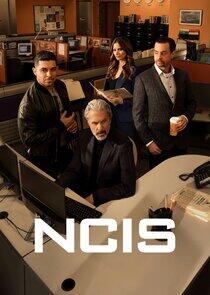The Power and the Glory - Season 1

Season 1

Episodes

The Fastest Men on Earth
The first Grand Prix was won 85 years ago at 73mph. This year's Indianapolis winner averaged 176mph.

The Road Racers
Millie Miglia, Targa Flori , Carrera Pan Americana - the names of the great road races have disappeared from the racing calendar, but they still evoke the history of motor racing at its most full-blooded. But as the power and speed of cars rose, so did the death toll of drivers and spectators. The sport was banned in the 1950s. Today's alternatives include racing in the Mexican deserts.

The Right Stuff
What makes a champion racing driver? Some of the sport's great names, including Nigel Mansell and Stirling Moss, offer an insight into what took them to victory. And at a school for racing drivers, students find out if they have that combination of skill, courage, toughness - and the will to win.

The Pioneers
This is the story of the remarkable men whose daring and skill pushed the top speed of racing cars from around 20mph to over 100mph in the pioneering age of the sport. This episode includes specially shot sequences with some of the classic cars of the period - from the Peugeots of the 1890s to the monster Panhards, Napiers, Renaults and Fiats, culminating in the first pure-bred Grand Prix car, the incomparable 1914 Mercedes.

The Aristocrats
The 20s and early 30s saw the expansion of grand-prix racing and the introduction of technical advances like supercharging and the first single-seaters. The designers produced some of the classic cars of all time - Bentley, Bugatti, Alfa Romeo.

Years of Thunder
From zero to 300mph in six seconds, nose-to-tail racing at 200mph, ear-splitting exhausts, gigantic crowds - this is motor racing the American way. Both drag racing and stock-car racing started illegally on the streets of America and have become part of the country's popular culture. Today they are multi-million-dollar businesses. The stars of these sports explain how it happened.

Racing for the Reich
Hitler knew that victory on the grand-prix circuits would demonstrate the Third Reich's technical superiority and bring his new Germany great prestige. So with government subsidies, both Mercedes-Benz and Auto Union set out to build a winning car, and the swastika became a familiar feature on the racetracks of the 30s.

Forest Deep, Mountain High
Rallying began as a genteel amateur sport for those with a sense of adventure - today it is highly competitive, with special cars, large back-up teams and professional drivers.

Those Red Cars
The story of the brilliant red cars of Italy - so elegant to look at, so easy to drive - which dominated grand-prix racing after the Second World War, featuring, in particular, the great classic of its time, the Maserati 250F.

The Revolutionaries
In 1958, a little Cooper Climax, driven by Stirling Moss, won the Argentinian Grand Prix. It was the first time in the modern era that a mid-engined car had won a grand-prix. The front-engined racing car was soon consigned to history. This is the story of the men behind this very British revolution, which started in a family garage business in Surrey.

Making a Marque
Ferrari, Porsche and Jaguar all made their reputations by winning on the racetrack. In the 1930s, MG were among the first to build a road car which could be raced. Jaguar's string of successes in the 1950s at Le Mans helped sell their sports cars all over the world. Using specially-shot footage, Making a Marque looks at some of the world's most beautiful sports cars which proved themselves first on the racetrack.

The Richest Prize
To win the Indianapolis 500 is an American dream. The drivers share over $7 million for just one race. This year's winner, Rick Mears, has won the richest prize in motor sport four times. He describes what it is like to drive round the famous track at speeds approaching 240mph. "You work all year to try and win this one," he says. The programme features some of the great races and spectacular crashes. With classic archive material, it evokes the most dangerous and exciting age of US motor racing, the Board Speedways of the 1920s. In these high-banked ovals, built of wooden planks, drivers of some of the earliest single-seaters, the Millers, risked all in pursuit of riches and the American National Championship.

State of the Art
How Formula 1 was transformed into a multi-million pound global business. Featuring interviews with racing drivers Nigel Mansell, James Hunt and Gerhard Berger, and team bosses Ron Dennis, Frank Williams and Ken Tyrrell.
Recently Updated Shows

Chicago Fire
No job is more stressful, dangerous or exhilarating than those of the Firefighters, Rescue Squad and Paramedics of Chicago Firehouse 51. These are the courageous men and women who forge headfirst into danger when everyone else is running the other way and whose actions make the difference between life and death. These are their stories.

Chicago P.D.
District 21 of the Chicago Police Department is made up of two distinctly different groups. There are the uniformed cops who patrol the beat and go head to head with the city's street crimes. And there's the Intelligence Unit, the team that combats the city's major offenses - organized crime, drug trafficking, high profile murders and beyond. These are their stories.

NCIS
NCIS (Naval Criminal Investigative Service) is more than just an action drama. With liberal doses of humor, it's a show that focuses on the sometimes complex and always amusing dynamics of a team forced to work together in high-stress situations. Leroy Jethro Gibbs, a former Marine gunnery sergeant, whose skills as an investigator are unmatched, leads this troupe of colorful personalities. Rounding out the team are Anthony DiNozzo, an ex-homicide detective whose instincts in the field are unparalleled and whose quick wit and humorous take on life make him a team favorite; the youthful and energetic forensic specialist Abby Sciuto, a talented scientist whose sharp mind matches her Goth style and eclectic tastes; Caitlin Todd, an ex-Secret Service Agent; and Timothy McGee, an MIT graduate whose brilliance with computers far overshadows his insecurities in the field; Assisting the team is medical examiner Dr. Donald "Ducky" Mallard, who knows it all because he's seen it all, and he's not afraid to let you know. From murder and espionage to terrorism and stolen submarines, these special agents travel the globe to investigate all crimes with Navy or Marine Corps ties.

Reacher
Reacher follows Jack Reacher, a veteran military police investigator who has just recently entered civilian life. Reacher is a drifter, carrying no phone and the barest of essentials as he travels the country and explores the nation he once served. When Reacher arrives in the small town of Margrave, Georgia, he finds a community grappling with its first homicide in 20 years. The cops immediately arrest him and eyewitnesses claim to place Reacher at the scene of the crime. While he works to prove his innocence, a deep-seated conspiracy begins to emerge, one that will require Reacher's keen mind and hard-hitting fists to deal with. One thing above all is for sure: They picked the wrong guy to take the fall.

The Rookie
The Rookie is inspired by a true story. John Nolan is the oldest rookie in the LAPD. At an age where most are at the peak of their career, Nolan cast aside his comfortable, small town life and moved to L.A. to pursue his dream of being a cop. Now, surrounded by rookies twenty years his junior, Nolan must navigate the dangerous, humorous and unpredictable world of a "young" cop, determined to make his second shot at life count.